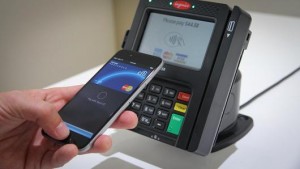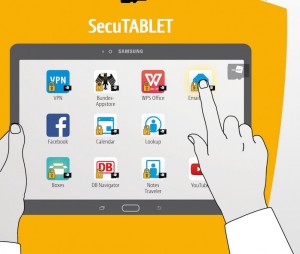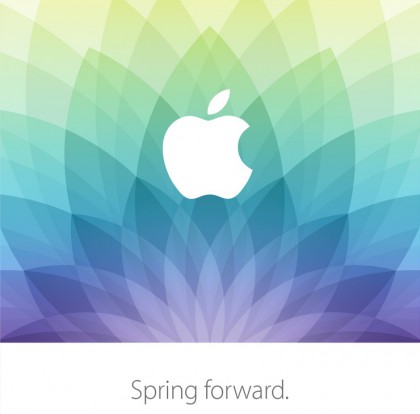Today is the day. Apple makes their first foray into the world of personal luxury and fashion, earning them reams of text on fashion and style pages around the world. There is a nearly endless plethora of speculation about what we are going to see, learn, and – in the case of many people, specifically the style-challenged tech press – be shocked by.
But, when push comes to shove everything that comes down the pike today can be summed up in four little words:
It’s Not A Watch.
Now then. Before we go any further, a note on nomenclature. When I say “watch”, I mean a proper Swiss mechanical watch. Not some cheap-ass quartz-movement thing from a department store. Not some overpriced-but-the-same-cheap-ass-quartz-movement thing from a “designer label”. I mean a hand-built automatic watch, the kind of thing you invest a significant sum into and plan on having for your entire life. That’s what a “watch” is. And – much to the upcoming dismay of clueless media types everywhere – that is the market that Apple has their eye on with this product. Not ugly “smartwatches”. Not the Timex crowd, nor the Marc Jacobs or Fossil or Kate Spade crowd. Think about names like Omega and Hamilton and Tag and you have a much better idea of where this will all play out.
Where were we? Oh, right.
It’s Not A Watch …
… but the iPhone wasn’t a phone, either. When Apple first released the iPhone, a precious few people (thank you, thank you very much) realized that it wasn’t a phone at all. It was Apple swinging for the fences with an entirely new concept of computing … the idea that most of the data interactions you have don’t really require sitting down at a traditional computer and instead can be done in the palm of your hand. The “phone” part of the iPhone is just an app, and if you are like most people it is one of the apps you use the least. But calling it a phone made it easier for people to understand. And want. And use. It was just window dressing, a way to get the device in to average mopes’ pockets and ease them into the now-commonplace world of mobile computing. And that is the eventual end-game here as well. Call it a watch. Make it beautiful and something that people crave. Let them realize later that they are now into wearable computing and can’t imagine life without it. It works a lot better than trying to sell them on strapping a computer to their wrist.
It’s Not A Watch …
… but it’s not a “smartwatch” either. If you have ever seen someone with a Galaxy Gear or a Moto 360 you will realize two things: One, current smartwatches are ugly as shit and two, they are horrible to use. That’s because the current idea of a smartwatch as a teeny tiny smartphone is horribly broken. Using a watch to do the things you do on your phone just makes the task, whatever it is, harder, slower, and more frustrating. Why would you wear something on your arm – and worse, something wretchedly ugly – just to make the things you do more difficult? Answer: You wouldn’t. Which is exactly why you have probably never actually seen someone wearing a Galaxy Gear. Or a Moto 360.
The solution? Take functions and abilities away from the device instead of trying to cram more in. You can tell by both the materials we have seen so far and by the vocabulary that Apple is using that they envision the watch as something that you interact with in passive ways. You glance at it. You feel a tap from it. You touch the face or the crown. But you never ever ever sit there and poke poke poke away at tiny elements on a tiny screen. If Apple maintains that mindset, and enforces some extremely stringent rules on the app store to keep developers from trying to cram busy smartphone apps onto a watch screen, it could be the breakthrough in bringing wearable computing to the teeming masses that has been eluding all of the other players in the game to this point.
It’s Not A Watch …
… but it definitely looks like one. There is no denying the fact that the Apple Watch looks like high-end jewelry, and not like something that your early-adopter nerd buddy would strap to his wrist to tap out blog entries while waiting for a bus. And the wild differentiation in styles, from an obvious sport-activity device to an understated everyday quietly-elegant device to a full-on mega-priced personal luxury item means that Apple is targeting three completely different groups or watch wearers here.
The sport model is, I think, a panacea to the traditional tech and millennial crowd. Something that they can buy at a price that they understand, with a look that they will like, and a utility that is idea for their groovy active lifestyles. These are the people who already have sports bands, and it’s a market segment that is already measurable and ready to be entered. As for the edition model, well, that is for people who can drop ten grand or more on a whim and won’t really care if they have to do it again next year to get an upgraded model. They aren’t normal people – they are an alien group all on their own, and they will buy expensive things just to have, well, expensive things.
But the standard watch? That’s aimed at a market that is a complete crap shot. It’s a market with all the potential in the world, but also one that could crash and burn. This is where Apple is taking a risk – trying to replace quality traditional watches on the wrists of suit-wearing office folk, on golfers and cafe-goers, on the kinds of people who carry a high-end smartphone in one hand and a six-dollar latte in the other. It’s an all-or-nothing bet here. This is the market with the most room for growth, and also the market where the price shocks cause the worst hue and cry. Which brings us to …
It’s Not A Watch …
… but it will certainly be priced like one. Lots of people have tried to come up with an estimate of what the various models will cost. Some of them have been laughably inane. But when thinking about the prices that will be announced today, and about the reaction that is sure to follow, here are three bits of information that are worth having in the back of your mind.
Bit #1: Read this incredibly naive comment from your Average Tech Press Pundit about the cost of a stainless steel watch bracelet. If you don’t want to wade through the text yourself, the money quote is:
“… many of us are waiting for the official steel bracelets to be made available (at a hefty a la carte price of $79.99)”
Hefty. Eighty bucks is “hefty”. Remember that.
Bit #2: When people ask me about watches, I invariably tell them to forget the Rolexes and head towards an Omega. You get a brilliant piece of machinery that will last forever and with a history and heritage that you can almost feel every time you slide the thing onto your wrist. Of all the Omega models, the Speedmaster 57 is my favourite. Solid, understated, classic, elegant … it is everything a personal luxury item should be. If you do happen to have an Omega Speedmaster and you needed to replace the standard stainless steel bracelet, it’s going to set you back a minimum of $600. Not $60. Not $160. Six hundred. Now remember back to the “hefty” price in Bit #1 and you can see how this is going to cause rampant conniption fits among the tech (and probably mainstream) press.
Bit #3: Examine this handy chart of three different models of the Omega Speedmaster and the associated retail prices.

These watches are identical inside. Same movement, same inner chassis, same daily, same everything. The only difference is the case material. And the prices are literally an order of magnitude different. Is there $15,000 worth of gold in the gold watch? $20,000 worth of gold in the gold watch and bracelet? No, of course not. There is, however, a completely different market for the two variants, and they are priced as such.
Will the difference between the standard Apple Watch and the gold edition model be $15,000? Probably not. But I wouldn’t be surprised at all if the difference was at least eight grand. Maybe more.
In other words, get ready for the shitstorm.
Now. With all that in play, I will take a shot at the madness anyway. We already know that the Sport model will start at the previously revealed price of $349. If I had to make an educated guess, I say that the standard stainless model will come in at $699 with bracelet options that take it all the way to $1199, and the gold Edition model will start at $5999 and have bracelet options that push it to the $11999.
Yep. Hefty. But also very much in keeping with the market that Apple hopes to open up with this particular play. The press can scream and faint all they want … Apple only cares if they sell.
The more intriguing question is whether or not the two sizes of each model will be priced the same. I have a sneaking suspicion that for the Sport, they will be the same. Size in a smartphone is a choice based on function. Size in a wearable is based on your body, and at least at the entry level I don’t see Apple making body size a monetized commodity. In fact, I think that even the stainless model will have one price for both sizes, although the steel bands may be priced in tiers depending on the size of the case they match. And the gold one? Oh yeah, that costs more for the bigger case. Just because they can.
It’s Not A Watch …
… but yes, it is going to be sold like one. Not like a computer, not like a phone. This is something you try on, heft, have a personal interaction with before you plunk down your cash. And that might be the biggest challenge of all. Apple retail stores are not set up with this sort of shopping experience in mind. Apple’s retail partners – specifically the big tech stores like Future Shop and Best Buy are really not set up for this sort of thing. How this part of the equation plays out will be the most interesting part of the whole experiment.
The traditional watch experience is also why the case and bracelet combinations will be limited to the ones you see on the Apple web site right now. You can’t go buy a stainless Speedmaster with a gold bracelet – Omega knows that will look like crap and they just don’t make it an option. The same mindset will be in play here – Apple doesn’t want nasty-looking combinations out in the wild, at least to start, and is willing to tick a few people off to maintain a certain visual standard as the product hits the street.
It’s Not A Watch …
… but it has been treated like one by the teams that designed and built it. And that, I think, is why this will eventually succeed. Everything about the product feels like a watch. Even the vocabulary that Apple uses to talk about the smallest details – to the point of using the unfamiliar-but-traditional term “complications” for visual elements of the watch face display – hints that was never designed as a tech toy on your wrist. This was designed as a beautiful personal item that you will be proud to wear … and just happens to do really cool stuff.
That’s the disruption. It isn’t about making smartwatches that do amazing new things. The Apple watch will probably do less than any other smartwatch on the market. Possibly far less. This is about making a high-end watch that just happens to do a few things that no other watch can do … and how our perceptions of computing are changed again.
Love it or hate it, the iPhone made the “post-PC” era a reality. Apple hopes the watch can do the same thing for wearable data. It’s a risk for sure. But the possible rewards? Staggering.







